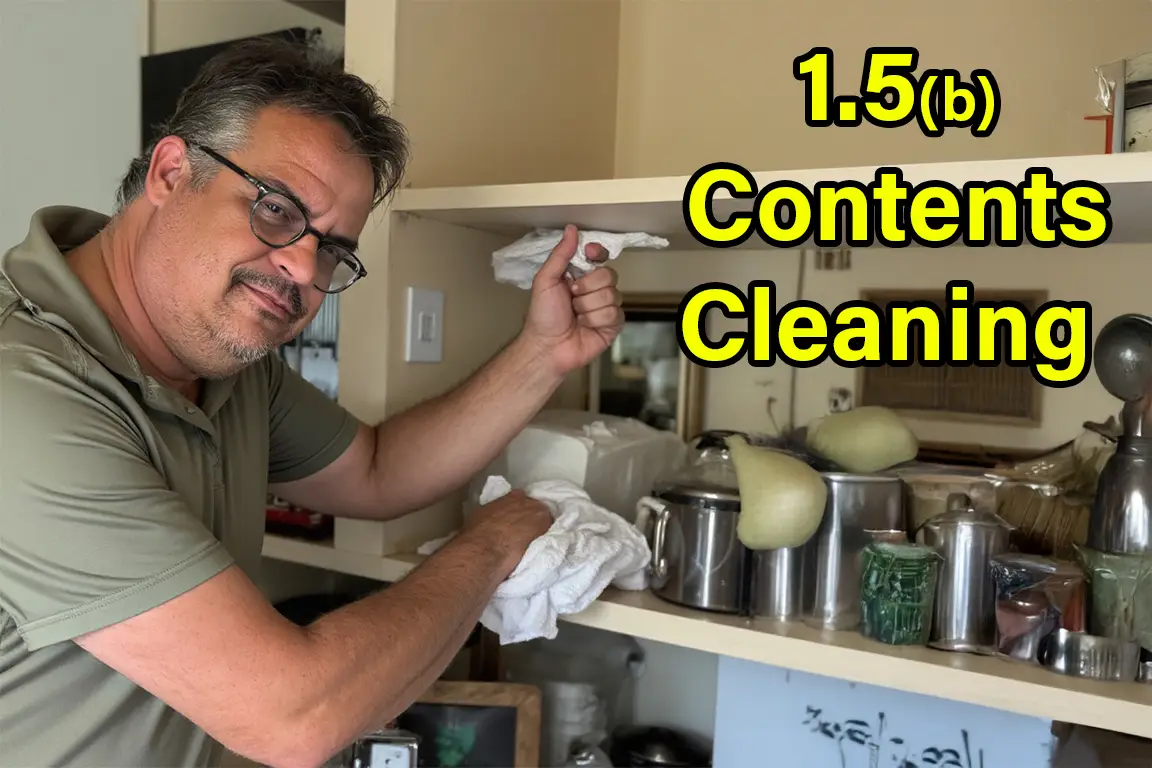Damp Methods
Damp Wiping – Remove Residual Particles
This is where we break the bond between particles and the surfaces they cling to. Mold fragments and mycotoxins often bind to oils, static, and residues—damp wiping removes them more effectively than dry methods alone.
• Use a botanical or non-toxic cleaner (like EC3, Branch Basics, or diluted hydrogen peroxide).
• Spray onto the cloth, not directly on the item.
• Fold your microfiber cloth into quarters—giving you 8 clean surfaces to work with.
• Wipe gently, and discard or launder cloths after use.
Damp wiping is essential for surfaces you touch regularly or breathe near, like furniture, trim, counters, and shelving.
Immersion Cleaning – For Washable Items
If an item can be submerged or machine-washed, immersion is the gold standard. This includes dishes, clothing, linens, toys, and some sealed decor.
Options:
• Dishwashing: Use the sanitize cycle if safe for the item.
• Laundry: Wash with fragrance-free detergent + 1 cup of vinegar or EC3 Laundry Additive. Use hot water and extra rinse cycles.
• Manual washing: For non-heat-safe items, hand wash in a clean bucket with warm water and mild detergent, then rinse and dry thoroughly.
Immersion provides a full 360-degree clean—perfect for items that need deep decontamination.
💡 Final Tip: Match the method to the material. Don’t over-clean fragile items, but don’t under-clean things you use daily. The right method, in the right order, reduces exposure and protects your health.

